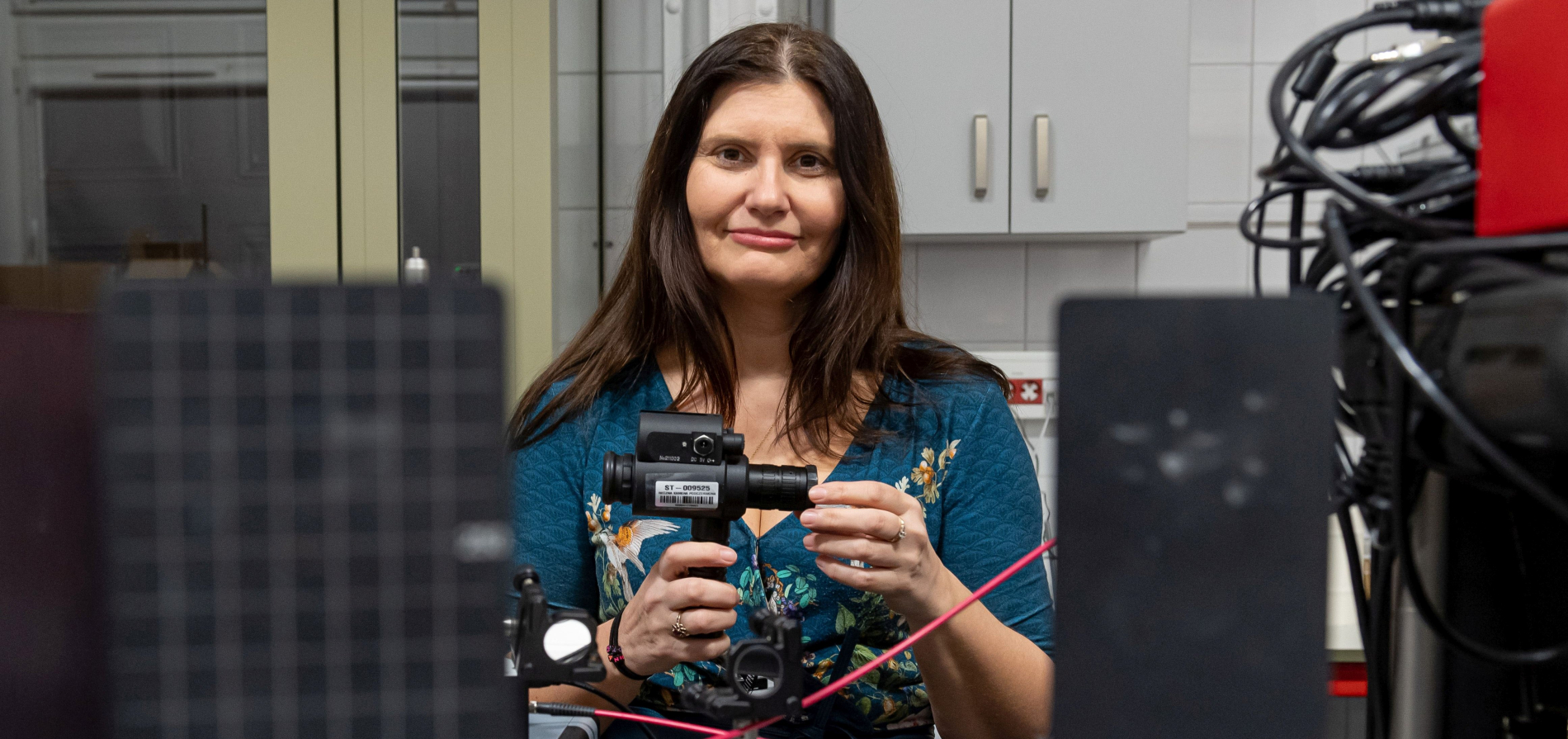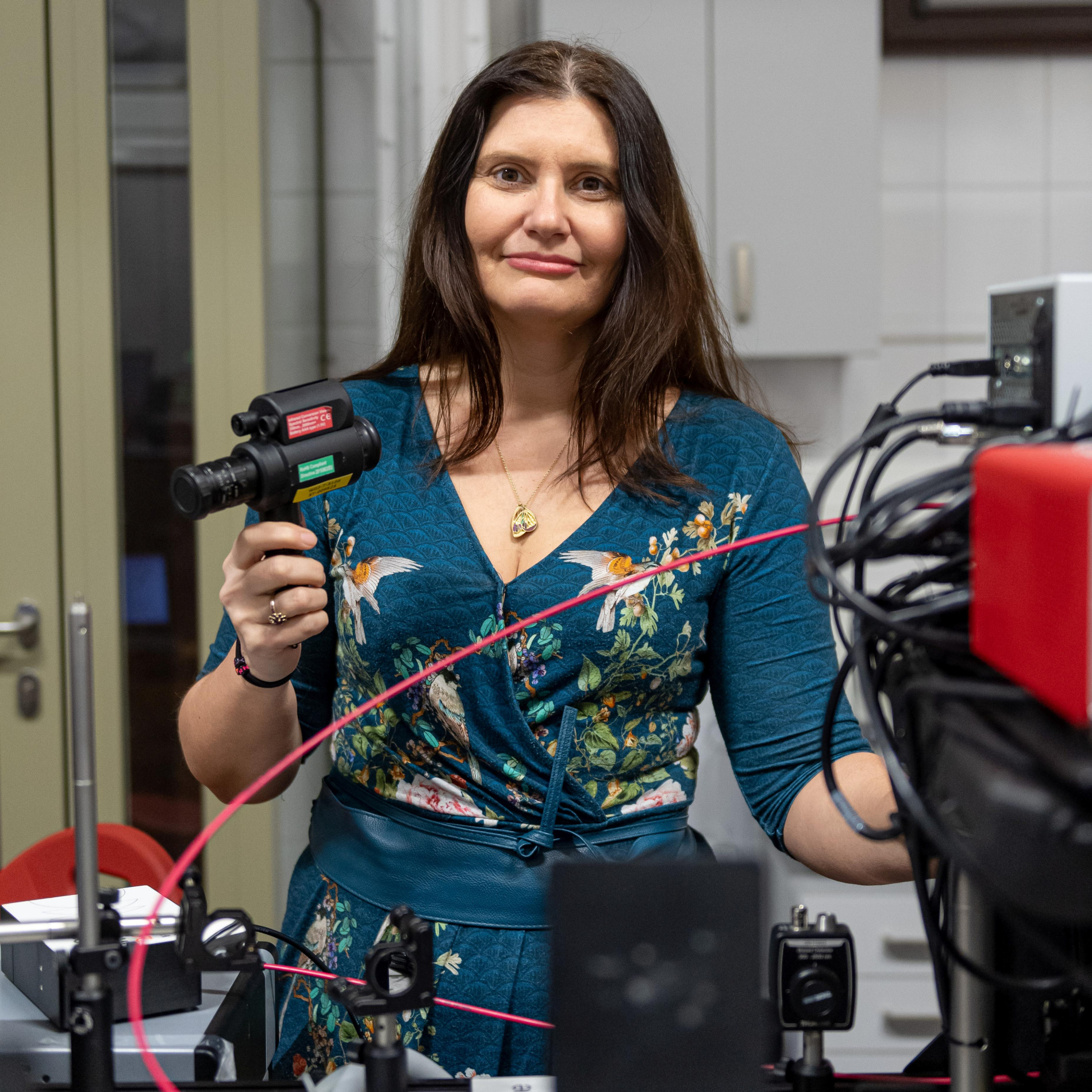YOUR BROWSER IS OUT-OF-DATE.
We have detected that you are using an outdated browser. Our service may not work properly for you. We recommend upgrading or switching to another browser.
Date: 21.03.2023 Category: science/research/innovation

The prestigious journal Chemical Society Reviews has published a paper on the role of a light source in antimicrobial photodynamic therapy. Prof. Katarzyna Matczyszyn from the Faculty of Chemistry is a co-author of the publication.
“In our study, we compare different light sources that are crucial to the process of antimicrobial photodynamic therapy,” explains Prof. Katarzyna Matczyszyn.
Antimicrobial photodynamic therapy (APDT) is a new and promising approach to combat the growing problem of antimicrobial resistance. It is based on the action of a photosensitiser, light, and oxygen.
Many studies on APDT confirm its in vitro and in vivo efficacy against bacteria, fungi, viruses, and parasites. However, the advancement of this field of study is focused on exploring potential targets and developing new photosensitisers. The role of the light source, a key element for ROS production, has so far been overlooked.
What are the main parameters required for effective photosensitiser activation? Is there an optimum exposure to light radiation? And finally, which light source is best? Answers to these questions were sought by a team made up of Marta Piksa, a PhD student and Krzysztof Pawlik, PhD, DSc. from the Institute of Immunology and Experimental Therapy of the Polish Academy of Sciences as well as researchers from the Scottish University of St. St Andrews and Wroclaw Tech’s Faculty of Chemistry. Their work resulted in the paper entitled “The role of the light source in antimicrobial photodynamic therapy”.
Due to the increasing number of antibiotic-resistant bacteria, its authors decided to focus on antimicrobial therapy and the search for alternative treatments for bacterial infections that pose a tangible threat to people.
Many studies describe the promising antimicrobial activity of APDT in vitro, but its application in vivo, especially in a clinical setting, remains very limited. This may be due to the lack of standardised conditions or protocols, which is due to the variety of photosensitisers (PSs) selected, the variable test conditions, including the light sources used to activate the PSs, as well as the methods used to measure antimicrobial activity and their efficacy in the treatment of bacterial infections.
 Therefore, the authors of the paper set out to systematically review and analyse the evidence from existing studies on APDT related to the light source used.
Therefore, the authors of the paper set out to systematically review and analyse the evidence from existing studies on APDT related to the light source used.
“We compared the results from over 400 scientific papers and extracted information on lasers, lamps, LED and OLED illuminators, as well as sunlight and other, more exotic, sources of radiation we considered the most valuable,” explains Prof. Matczyszyn, initiator of the review. “The process was very arduous but worthwhile.”
The publication shows how pathogen reduction depends on the light source used, the radiation exposure, as well as the irradiance of the light used and the type of pathogen. Thus, the current state of development of the APDT was critically assessed, and areas to be addressed in future research were identified.
“We anticipate that further standardisation of experimental conditions will advance the field and new key optical and biological parameters will emerge, which should be reported in all APDT studies,” says Prof. Katarzyna Matczyszyn.
Progress in the field of light sources will facilitate more in vivo studies and clinical trials in the future, making APDT therapy a sustainable alternative therapeutic option for bacterial and microbial infections.
Entitled “The role of the light source in antimicrobial photodynamic therapy”, the paper has attained the third highest impact factor value (60.615) of studies ever produced at Wrocław Tech.
Our site uses cookies. By continuing to browse the site you agree to our use of cookies in accordance with current browser settings. You can change at any time.